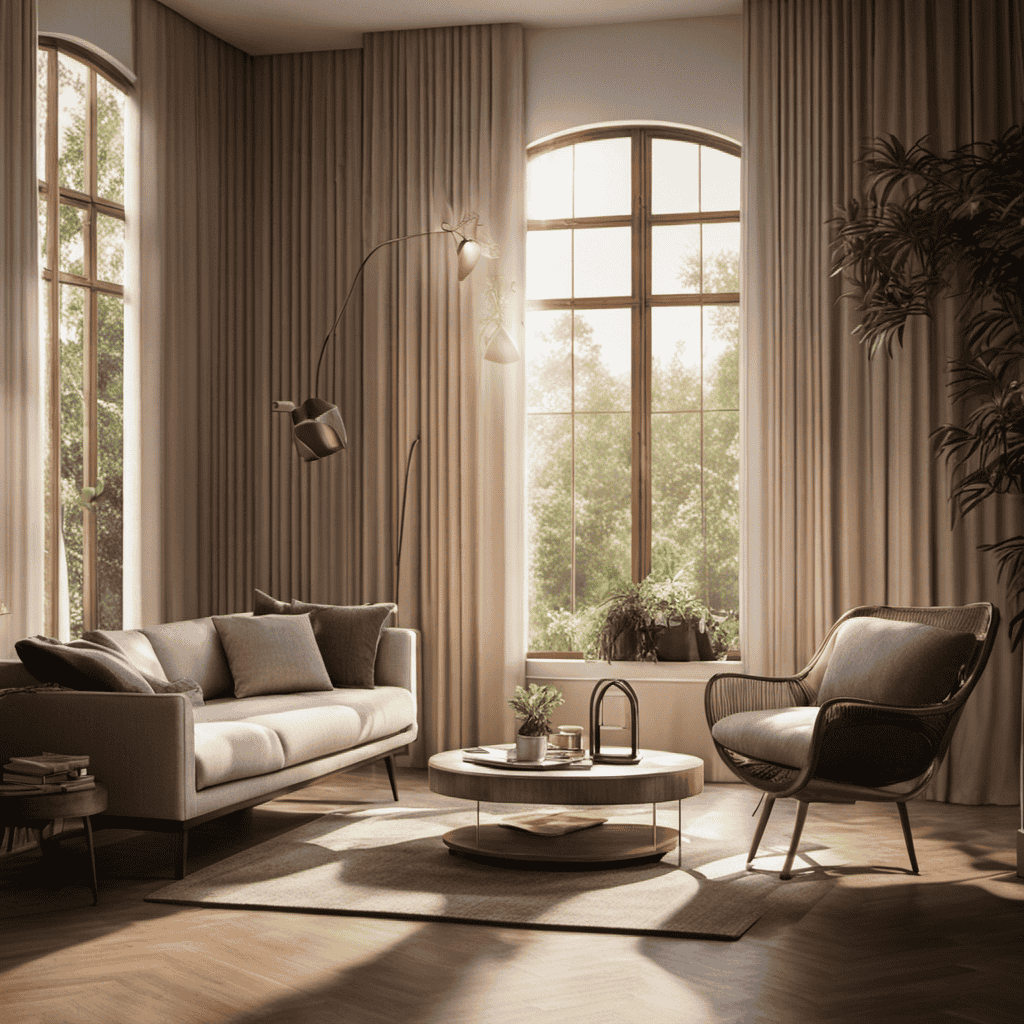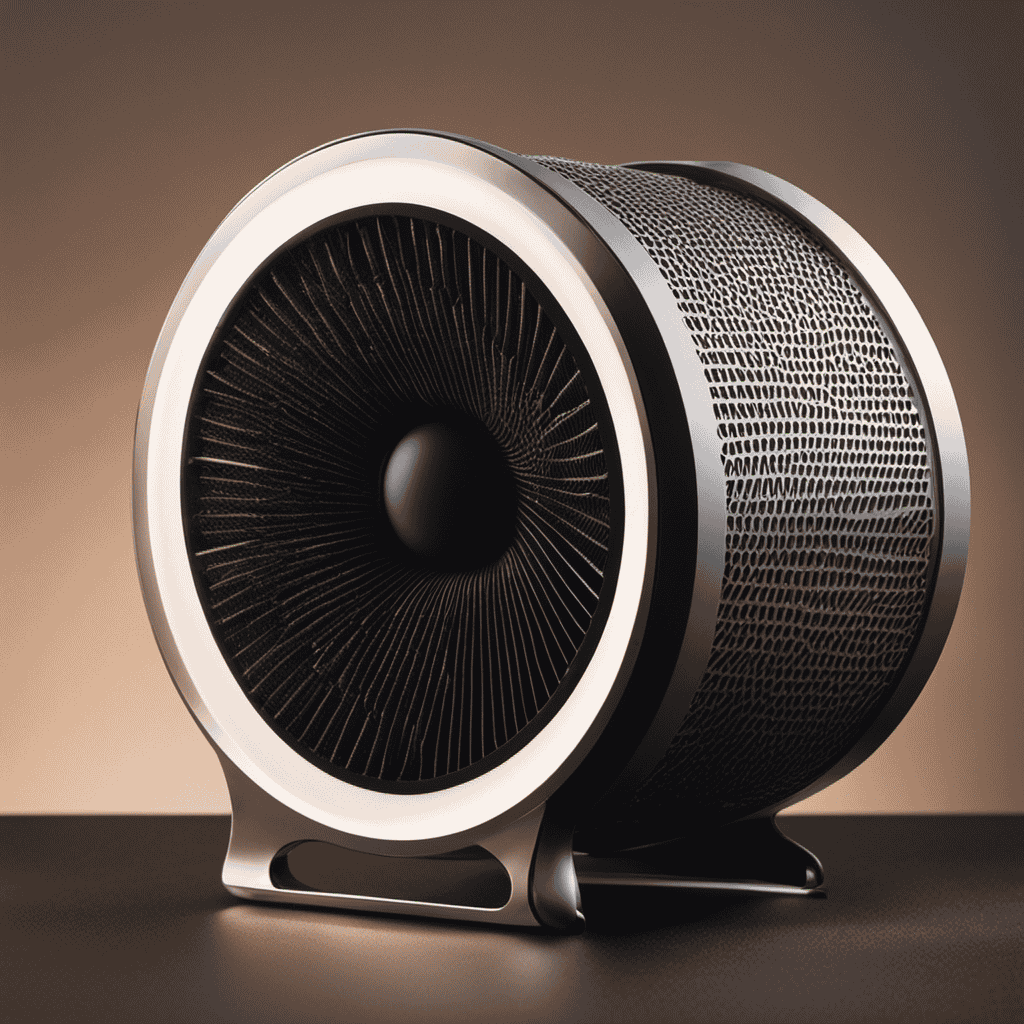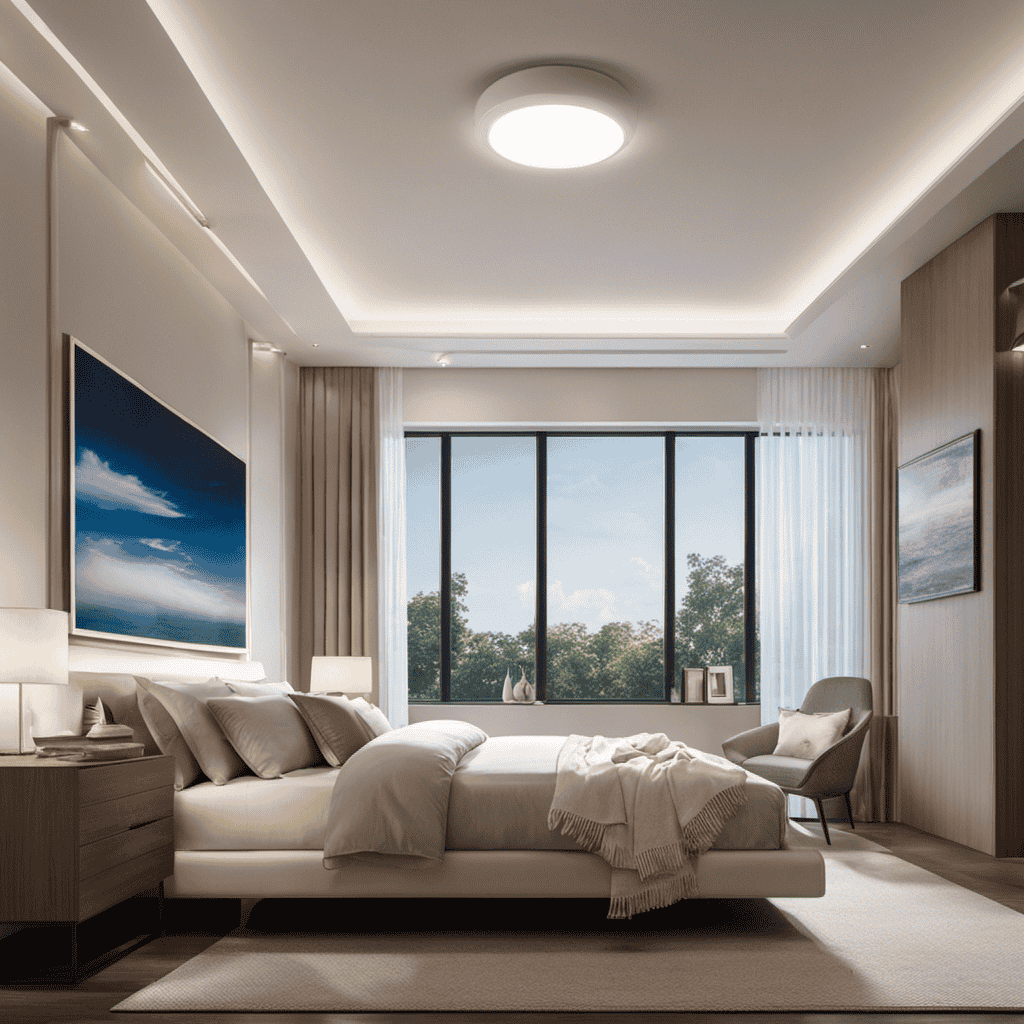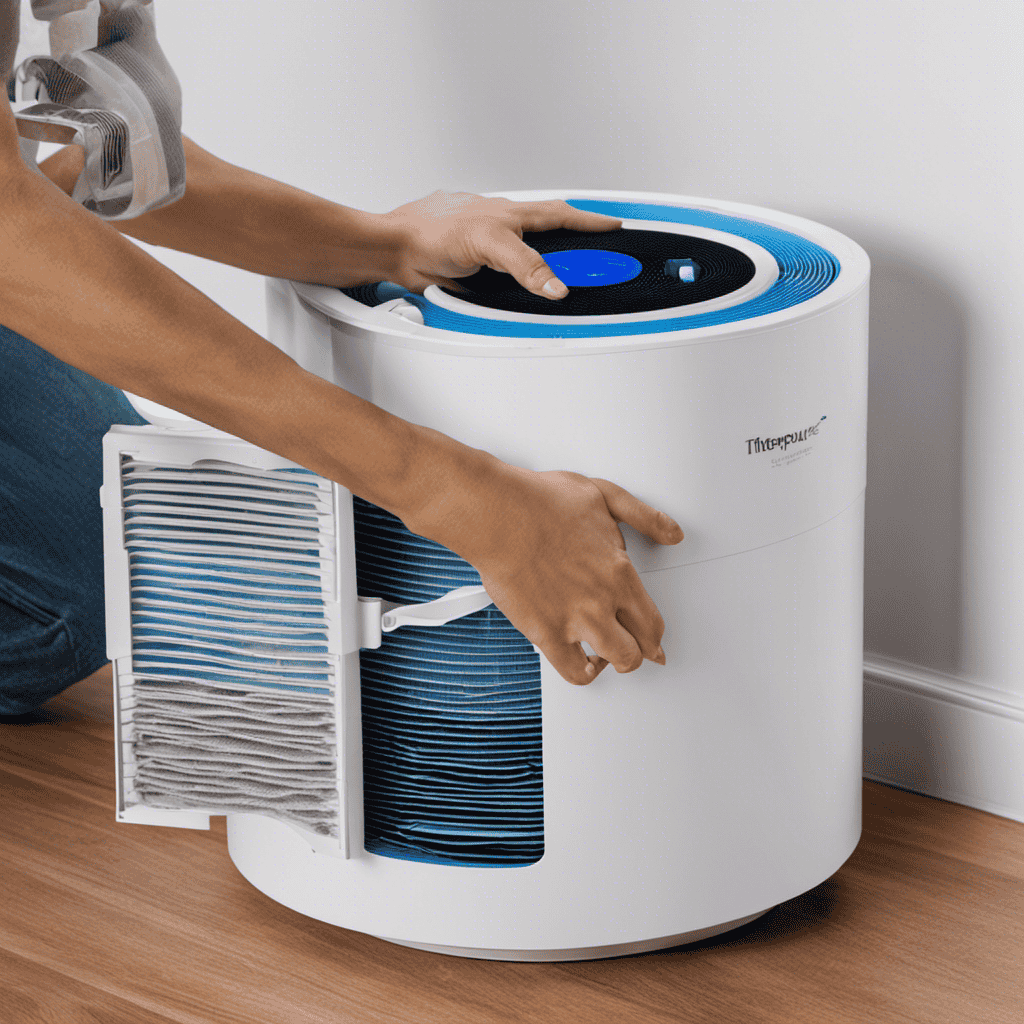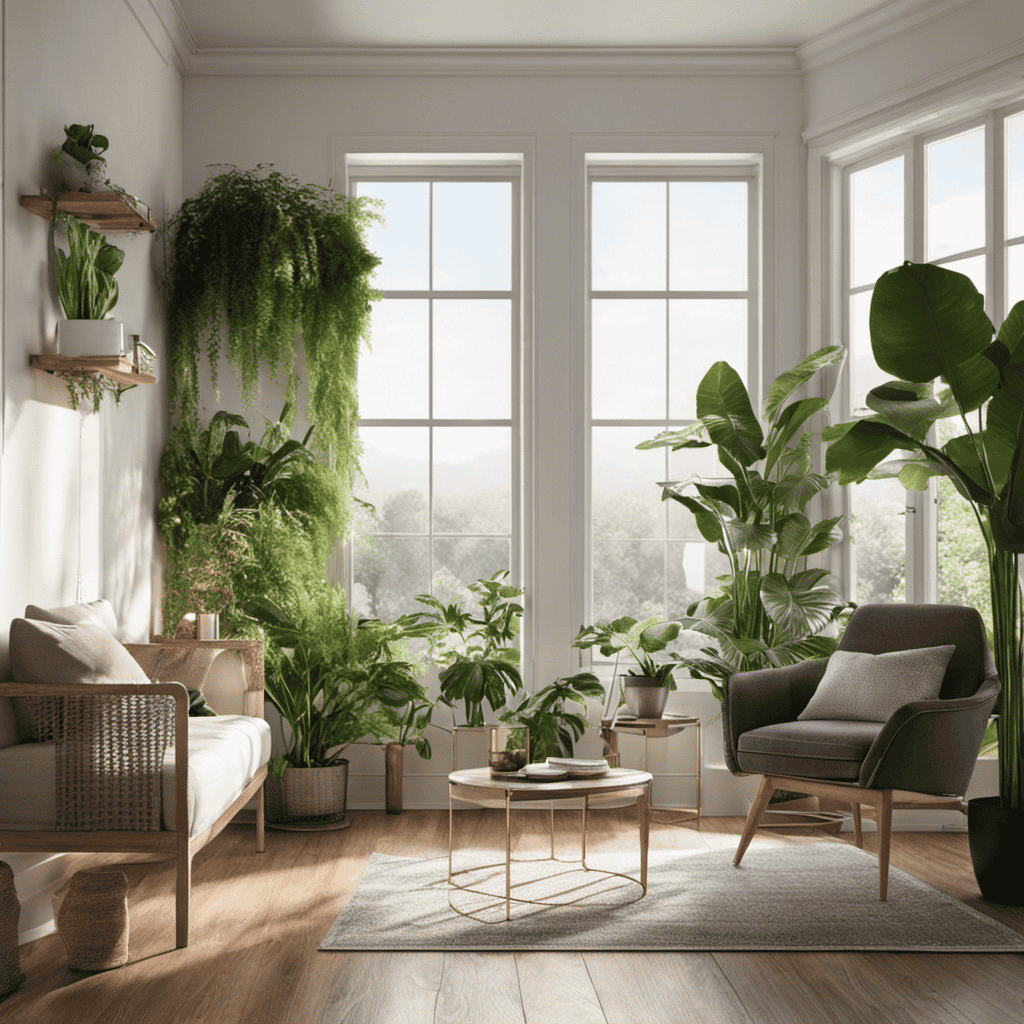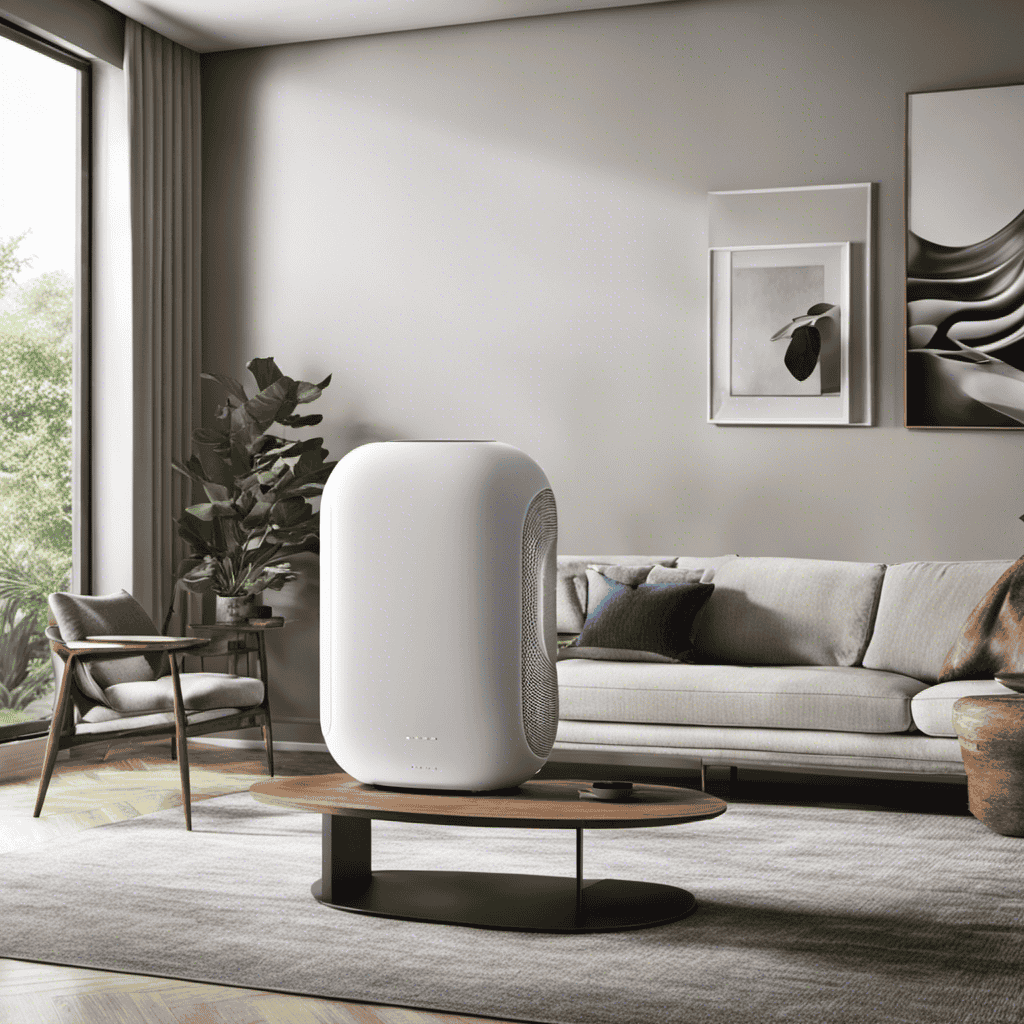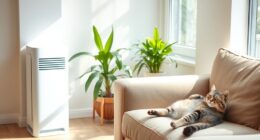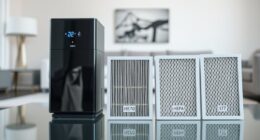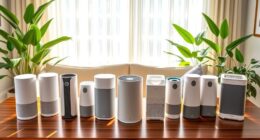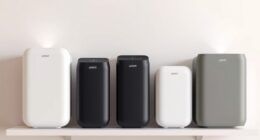As a homeowner, I’ve always strived to create a clean and healthy environment for my family. That’s why I turned to an air purifier.
It’s a simple yet effective device that can make a big difference in the air quality of your home. In this article, I’ll guide you through the process of choosing, setting up, and operating an air purifier.
Plus, I’ll share some maintenance tips to ensure you get the most out of this essential tool.
Let’s dive in and discover how to use an air purifier at home.
Key Takeaways
- Consider the size of the room when choosing an air purifier.
- Proper placement ensures efficient circulation and cleaning of the air.
- Avoid placing the air purifier near airflow obstructions such as curtains or furniture.
- Adjust the fan speed on the air purifier to control airflow and customize performance.
Choosing the Right Air Purifier
When choosing the right air purifier, it’s important to consider the size of the room. Different air purifier brands offer a wide range of options, but not all of them are suitable for every room size.
To find the most cost-effective option, you need to determine the square footage of your room. This can be done by measuring the length and width of the room and multiplying them together. Once you have the square footage, you can refer to the air purifier’s specifications to see if it is capable of effectively cleaning the air in your room.
Investing in an air purifier that is designed for a larger room than yours can be a waste of money, while choosing one that is too small may not effectively clean the air. Therefore, considering the size of the room is crucial when selecting the right air purifier.
Placement and Positioning
When it comes to positioning an air purifier, choosing the optimal room location is crucial for its effectiveness. Proper placement ensures that the purifier can efficiently circulate and clean the air in the room.
Additionally, it’s important to avoid placing the purifier near any airflow obstructions such as curtains, furniture, or walls, as this can hinder its ability to effectively purify the air.
Optimal Room Locations
The best place to put your air purifier is in a central location in your home. This ensures maximum coverage and effectiveness.
Here are some factors to consider when choosing the optimal room location for your air purifier:
-
Ideal height: Place your air purifier at a height that allows for efficient air circulation. A recommended height is around waist level or slightly higher.
-
Room size: Consider the size of the room when positioning your air purifier. If the room is small, placing the air purifier near the center will help distribute purified air evenly. For larger rooms, it may be beneficial to place multiple air purifiers strategically to cover the entire space.
-
Avoid obstacles: Ensure that your air purifier has enough space around it to function properly. Avoid placing it near furniture, curtains, or other objects that could obstruct the airflow.
Avoiding Airflow Obstructions
To ensure proper airflow and maximize the effectiveness of your air purifier, make sure there is enough space around it and avoid placing it near any furniture or curtains. This is important because airflow restrictions can significantly reduce the air purifier’s ability to clean the air in your home. By optimizing air circulation, you can ensure that the purifier can effectively capture and remove pollutants from the air. To help you visualize the importance of avoiding airflow obstructions, here is a table outlining the recommended distances between the air purifier and surrounding objects:
| Object | Recommended Distance |
|---|---|
| Furniture | 2 feet |
| Curtains | 1 foot |
| Walls | 1 foot |
Setting Up the Air Purifier
When it comes to maximizing the effectiveness of an air purifier, proper placement is key. It is important to position the purifier in a central location within the room to allow for optimal air circulation.
Additionally, considering the filter replacement schedule is crucial to ensure that the purifier continues to function at its best. Regularly replacing the filters as recommended by the manufacturer will help maintain the purifier’s efficiency.
Lastly, noise level considerations should not be overlooked. Some air purifiers can produce loud noise, which may be disruptive in certain environments. Choosing a model with a low noise level is essential for a peaceful and comfortable environment.
Placement for Maximum Effectiveness
For maximum effectiveness, you should place the air purifier in a central location within the room. This will ensure that the air is evenly circulated and purified throughout the space. Common mistakes in air purifier placement can hinder its performance and limit its ability to clean the air effectively.
To maximize the effectiveness of your air purifier, follow these tips:
-
Avoid placing the air purifier near walls or furniture. This can obstruct the airflow and prevent the purifier from effectively capturing pollutants.
-
Keep the air purifier away from direct sunlight or heat sources. High temperatures can affect the performance of the filters and reduce their lifespan.
-
Position the air purifier at a level where it can effectively capture airborne pollutants. Placing it at a higher level, such as on a shelf or table, can improve its ability to clean the air.
Filter Replacement Schedule
In order to ensure the air purifier’s effectiveness, it is crucial to follow a regular filter replacement schedule. Over time, the filters in an air purifier can become clogged with pollutants, reducing their efficiency.
The replacement frequency will vary depending on the specific model and usage, but generally, it is recommended to replace the filters every 6 to 12 months. However, some advanced air purifiers now come with filters that have an extended lifespan of up to 2 years. It is important to check the manufacturer’s guidelines for the recommended replacement frequency.
By staying on top of filter replacements, you can ensure that your air purifier continues to provide clean and fresh air in your home.
Now let’s move on to consider the noise level considerations in the next section.
Noise Level Considerations
One important factor to consider when choosing an air purifier is the noise level it produces. While the primary purpose of an air purifier is to clean the air we breathe, it is equally important to ensure that it doesn’t disturb our sleep or daily activities.
Here are three key considerations to keep in mind when evaluating the noise level of an air purifier:
-
Decibel Level: Look for air purifiers that operate at a low decibel level, typically below 50dB. This ensures a quiet and peaceful environment while the purifier is running.
-
Fan Speed Settings: Opt for purifiers that offer multiple fan speed settings. This allows you to adjust the noise level based on your preference and requirements.
-
Soundproofing Solutions: If noise is a concern, consider implementing soundproofing solutions such as placing the air purifier on a rubber mat or using noise-absorbing materials around it.
Choosing an air purifier with low noise levels can greatly contribute to improved sleep quality and overall comfort in your home.
Operating and Adjusting the Settings
To adjust the fan speed on the air purifier, simply press the corresponding button on the control panel. This allows you to control the airflow and customize the performance of the purifier according to your needs. Adjusting the fan speed is crucial in controlling air quality as it determines the rate at which the air is circulated and filtered. Higher fan speeds can help remove pollutants quickly, while lower speeds are more suitable for maintaining a quiet environment during sleep or relaxation. By adjusting the fan speed, you can optimize the purification process and ensure that the air in your home stays clean and fresh. Refer to the table below for a better understanding of the different fan speed options available on most air purifiers:
| Fan Speed | Description | Ideal Use |
|---|---|---|
| Low | Provides a gentle and quiet airflow | Suitable for bedrooms or areas with minimal pollution |
| Medium | Offers a balanced airflow | Great for general use in living areas |
| High | Delivers a powerful airflow | Recommended for areas with high pollution levels or for quick air cleaning |
Understanding and adjusting the fan speed is essential for effectively controlling the air quality in your home. Experiment with the different settings to find the ideal fan speed that meets your specific needs and preferences. Remember that maintaining a clean and healthy indoor environment is key to promoting overall well-being.
Maintenance and Cleaning Tips
Regular maintenance and cleaning are essential to ensure optimal performance and longevity of your air purifier. Here are some maintenance tips and cleaning techniques to keep your air purifier running smoothly:
-
Change the filters regularly: Filters are the heart of an air purifier. Replace them as recommended by the manufacturer to maintain the purifier’s effectiveness in removing pollutants from the air.
-
Clean the exterior: Dust and dirt can accumulate on the exterior surface of your air purifier, hindering its performance. Wipe the exterior regularly with a soft cloth or use a vacuum cleaner with a brush attachment to remove any debris.
-
Check the fan and vents: Over time, dust and debris can accumulate in the fan and vents, obstructing airflow. Use a soft brush or a can of compressed air to clean these areas gently.
Maximizing the Benefits of an Air Purifier
Maximize the benefits of your air purifier by ensuring that you clean and maintain it regularly.
In addition to regular maintenance, there are other ways to optimize the performance of your air purifier.
One way is by adjusting the fan speed according to your needs. Most air purifiers come with multiple fan speed settings that allow you to control the airflow and filtration efficiency. By adjusting the fan speed, you can customize the purification process based on the air quality in your home.
Another important aspect is monitoring the air quality regularly. This can be done using an air quality monitor or by simply paying attention to any changes in the air around you. By monitoring the air quality, you can determine if your air purifier is effectively removing pollutants and adjust its settings accordingly.
Conclusion
In conclusion, using an air purifier at home can greatly improve the air quality and create a healthier living environment.
By selecting the right air purifier, placing it strategically, and setting it up properly, you can effectively remove pollutants and allergens from the air.
Regular maintenance and cleaning will ensure the optimal performance of your air purifier.
Remember, an air purifier is like a silent guardian, working tirelessly to provide you with clean and fresh air.
So, invest in one today and breathe easy!
